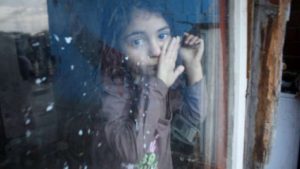New group to tackle statelessness
An international initiative launched recently aims to improve the circumstances of an estimated 10 million stateless people around the world.
The Statelessness Network Asia Pacific (SNAP) was launched at the Conference on Addressing Statelessness in Asia and the Pacific, in Malaysia, last November.
Its aims are to prevent and resolve statelessness in Asia and the Pacific.
 It has the stated specific goals of: building solidarity and cooperation between stateless communities, civil society organisations, and other stakeholders working on issues around statelessness; developing and supporting initiatives that promote solutions to statelessness as well as increasing knowledge and visibility; and, understanding on the right to nationality and the issue of statelessness.
It has the stated specific goals of: building solidarity and cooperation between stateless communities, civil society organisations, and other stakeholders working on issues around statelessness; developing and supporting initiatives that promote solutions to statelessness as well as increasing knowledge and visibility; and, understanding on the right to nationality and the issue of statelessness.
SNAP founding member Ramesh Kumar said the UNHCR had estimated that statelessness affects at least 10 million people worldwide, with the highest concentration of stateless persons in the Asia Pacific region.
“Populations who are stateless, or at risk of statelessness, often have limited or no access to basic human rights such as education, employment, housing, and health services,” said Mr Kumar, who is also on the organisation’s governance board.
“Also they are at a heightened risk of exploitation, human trafficking, arrest and arbitrary detention because they have difficulty proving who they are or links to a country of origin,” he said.
“Stateless people, and those at risk of statelessness, are also often unable to pay taxes, buy and sell property, open a bank account, legally marry, or register a birth or death. Statelessness can also be a cause and consequence of forced migration,” Mr Kumar said.
In absolute numbers, statelessness is documented as affecting far more people in Asia and the Pacific than in any other region of the world, with UNHCR reporting a total of 1,422,850 persons under its statelessness mandate in Asia.
There are six countries in which the number of stateless persons is reported to be over 10,000 and a further nine which are currently marked by an asterisk in UNHCR’s statistics.
Major populations of stateless people can be found in India, Indonesia, Nepal, Pakistan and Myanmar.
And the world’s most significant stateless refugee populations include Black Mauritanians, Faili Kurds, stateless Kurds from Syria and Rohingya refugees.
The creation of SNAP follows the of the UNHCR’s adoption of a ‘Global Action Plan to End Statelessness (2014-24) which sets out objectives and actions to combat statelessness.
The plan defines a stateless person as “someone who is not considered as a national by any state under the operation of its law”.
It says statelessness can have devastating consequences for individuals and it can occur for several reasons, including discrimination against particular ethnic or religious groups, or on the basis of gender; the emergence of new states and transfers of territory between existing states; and gaps in nationality laws.
Some people are born stateless, others become stateless.
The action plan aims to achieve four steps ending statelessness: identification, prevention, reduction and protection.
Gaps in nationality laws are a major cause of statelessness. Every country has laws which establish under what circumstances someone acquires nationality or can have it withdrawn.
The plan says that if these laws are not carefully written and correctly applied, some people can be excluded and left stateless.
It says one example is children who are of unknown parentage in a country where nationality is acquired based on descent from a national.
Another factor that can make matters complicated is when people move from the countries where they were born.
A child born in a foreign country can risk becoming stateless if that country does not permit nationality based on birth alone and if the country of origin does not allow a parent to pass on nationality through family ties.
Also, the rules setting out who can and who cannot pass on their nationality are sometimes discriminatory. The laws in 27 countries do not let women pass on their nationality, while some countries limit citizenship to people of certain races and ethnicities.
Mr Kumar sais the most effective way of resolving a lot of statelessness situations was through changes to legislation or government policy.
“For instance in some countries a one off measure to recognise as nationals some groups that are excluded from citizenship could resolve some situations,” he said.
“Also, requirements or procedures for naturalisation could be simplified to make it easier for stateless people to acquire nationality,” Mr Kumar said.
Laurie Nowell
AMES Australia Senior Journalist













Leave a Comment